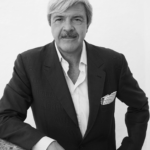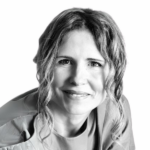Medical doctors and Surgeons
Marco Klinger’s plastic surgery: 0-0 ball in the center
Plastic surgery is a mix of brain, hands and scalpel.
The wide experience of Marco Klinger, Professor of Reconstructive, cosmetic and plastic surgery at the University of Milan, is based on empathy, professionalism and the desire to always improve, despite the great successes already achieved. In this interview, the professor highlights the importance of establishing a relationship with the patient and letting her problem become yours as well. This way, in fact, we share the same perspective to obtain a good result, especially when it comes to breast reconstruction.
The breast reconstruction process explained by Marco Klinger

“Breast reconstruction has great mental importance allowing the woman to recognize herself again,” explains the professor. In fact, this intervention is essential because it prepares the patient to receive treatment, positively influencing the outcome.
“Professor Umberto Veronesi was one of the first to suggest discharging patients whose breast was reconstructed,” explains Klinger. Subsequently, many doctors followed this suggestion, even though reconstruction is a challenge for surgeons.
“It is not easy to achieve an immediate result after surgery, but I always reassure my patients that their breast will be reconstructed,” confesses Klinger.
In fact, reconstruction is easier whenever quadrantectomy is pursued, while it is more difficult in the rare cases where mastectomy is performed. “Nipple-sparing mastectomy involves the removal of the entire mammary gland. It is therefore necessary to assess whether the patient has the anatomical qualities for a prosthesis to be used,” clarifies Klinger.
It is necessary to properly assess the case, especially when the patient is diabetic or smokes. Based on that the surgeon can decide whether it is worth doing an immediate reconstruction, perhaps with an expander.
“It is a bumpy journey, and empathy towards patients should always lead the way.” The scars left by the surgery are also very relevant. If the tumor is circumscribed, it can be removed with a periareolar access, leaving just a small scar. This procedure can be carried out thanks to the techniques borrowed from cosmetic surgery.
During breast reconstruction surgery, it is also essential to act on the healthy breast in order to maintain balance. “If it is possible to remove only the diseased quadrant —specifies the professor—, an equal part can also be removed from the healthy breast in order to keep a balance between the two.”
Instead, when a mastectomy is performed, either a mastopexy or a breast reduction may be necessary.
“In some cases, it is necessary to overcorrect from the start —explains Klinger— in order to achieve symmetry.”
Plastic surgery: between dream and reality
“I address each surgery from a 360-degree perspective. That’s the beauty of each and every kind of cosmetic surgery,” underlines Klinger. The plastic surgeon, in fact, needs to reproduce concavity and convexity and, above all, has to predict what will happen next. “My experience is based on a huge number of surgeries, which have allowed me to learn how to do things better and quickly.“
It is also important that empathy is established with the patient: “I need to fall in love with the patient as well —points out Klinger— . When there is a good chemistry, her problem becomes mine, and I know that the result will be breath-taking.”
Some patients bring a photo as a reinforcement, which can help for the surgery, subject to the surgeon’s approval and assessment. In other cases, instead, patients’ requests are sometimes exaggerated. “To like one another, the appreciation needs to be mutual —concludes the professor—. If there is no empathy by the second minute of conversation, we need to start anew.” In such case, the professor recommends waiting two months and then re-evaluating the surgery, in order to begin the process again together with a cool head.




































